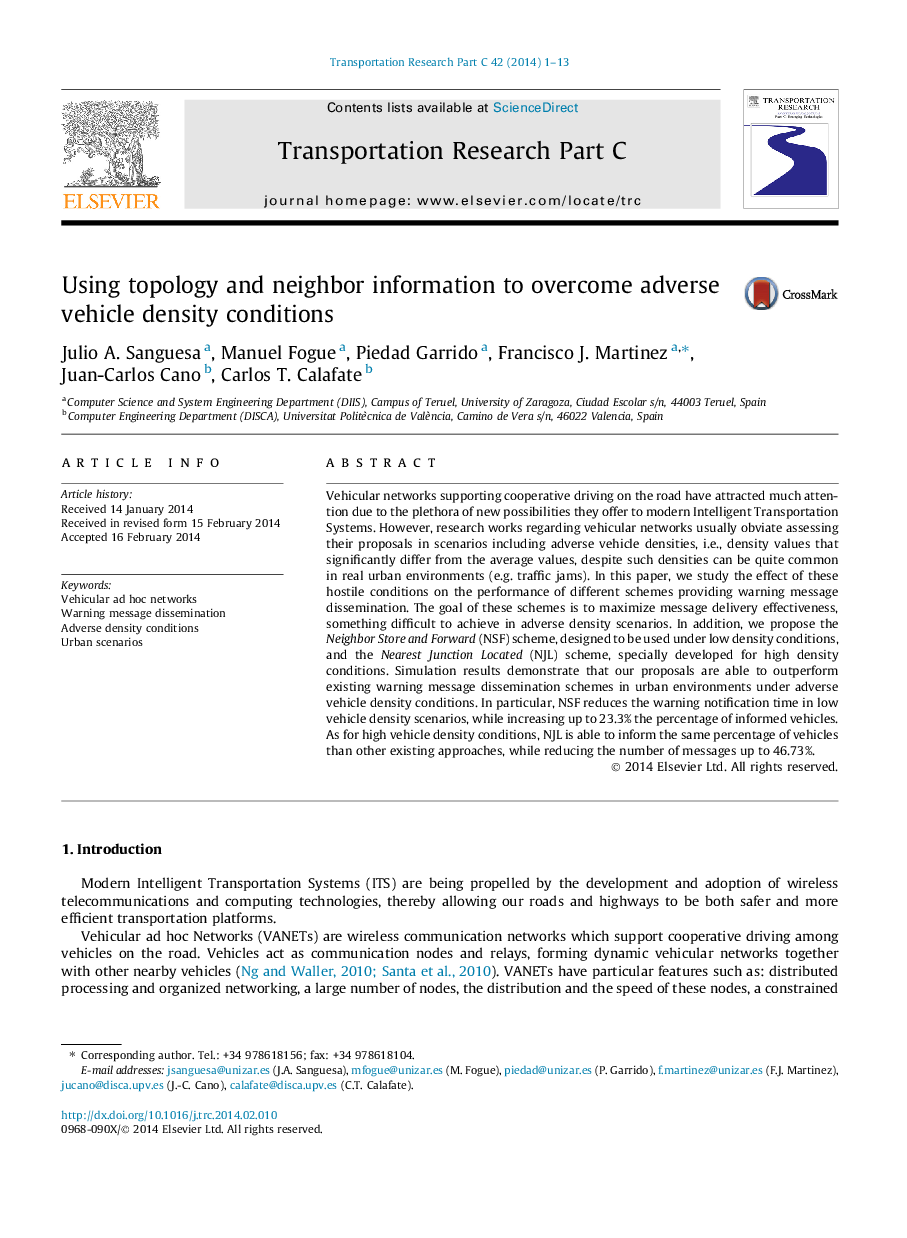| Article ID | Journal | Published Year | Pages | File Type |
|---|---|---|---|---|
| 525115 | Transportation Research Part C: Emerging Technologies | 2014 | 13 Pages |
•We proposed two warning message dissemination approaches for adverse densities.•The Neighbor Store and Forward (NSF) scheme was designed for very low densities.•The Nearest Junction Located (NJL) scheme was designed for very high densities.•We demonstrated the feasibility of them in different urban scenarios.•Our proposed schemes outperform some existing dissemination algorithms.
Vehicular networks supporting cooperative driving on the road have attracted much attention due to the plethora of new possibilities they offer to modern Intelligent Transportation Systems. However, research works regarding vehicular networks usually obviate assessing their proposals in scenarios including adverse vehicle densities, i.e., density values that significantly differ from the average values, despite such densities can be quite common in real urban environments (e.g. traffic jams). In this paper, we study the effect of these hostile conditions on the performance of different schemes providing warning message dissemination. The goal of these schemes is to maximize message delivery effectiveness, something difficult to achieve in adverse density scenarios. In addition, we propose the Neighbor Store and Forward (NSF) scheme, designed to be used under low density conditions, and the Nearest Junction Located (NJL) scheme, specially developed for high density conditions. Simulation results demonstrate that our proposals are able to outperform existing warning message dissemination schemes in urban environments under adverse vehicle density conditions. In particular, NSF reduces the warning notification time in low vehicle density scenarios, while increasing up to 23.3% the percentage of informed vehicles. As for high vehicle density conditions, NJL is able to inform the same percentage of vehicles than other existing approaches, while reducing the number of messages up to 46.73%.
